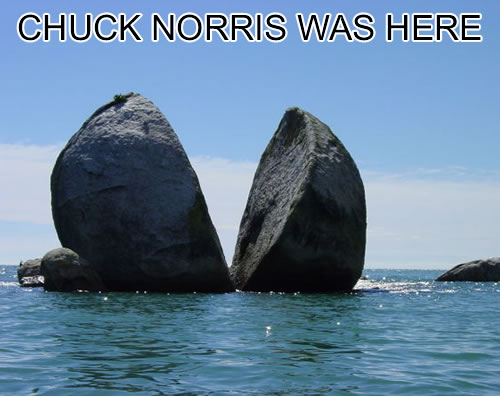Asteroid Defense: Way of the Intercepting Iceberg
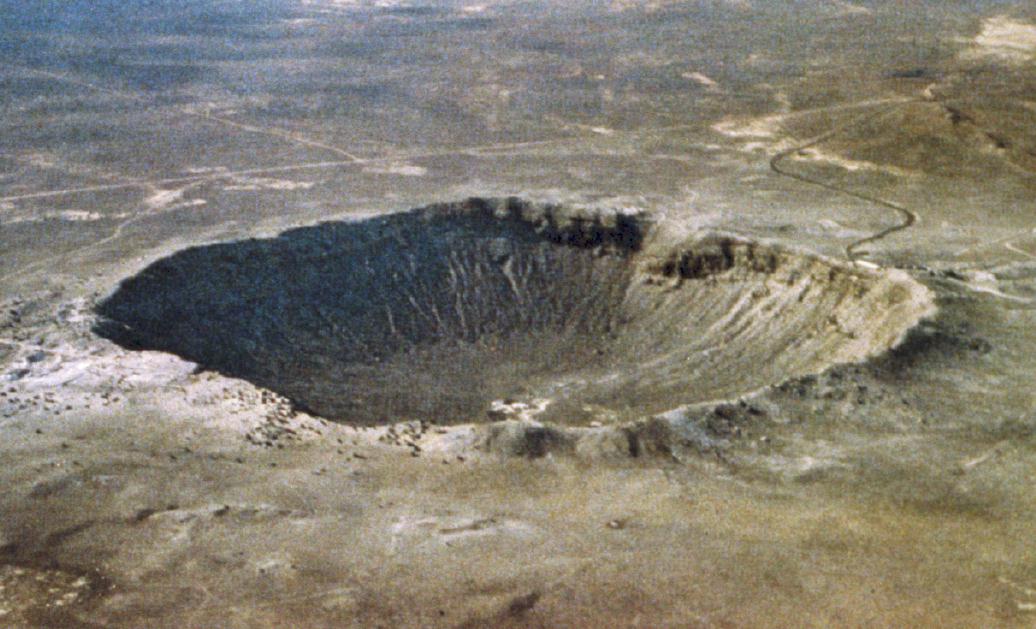 |
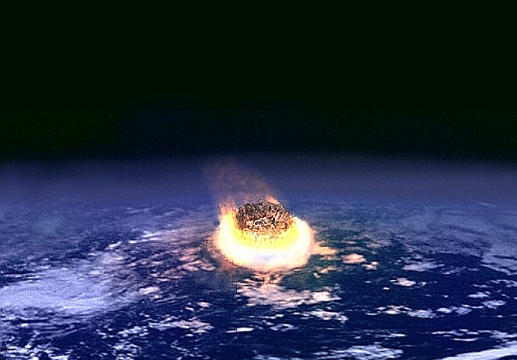 |
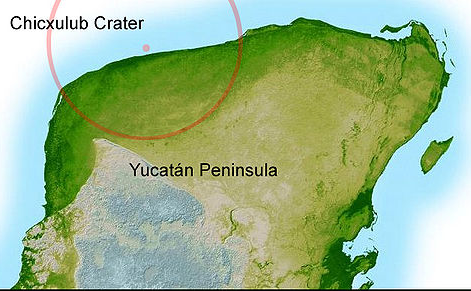 |
| Meteor Crater, Arizona |
|
Dinosaur extinction |
Velocity distribution of near Earth asteroids and comets
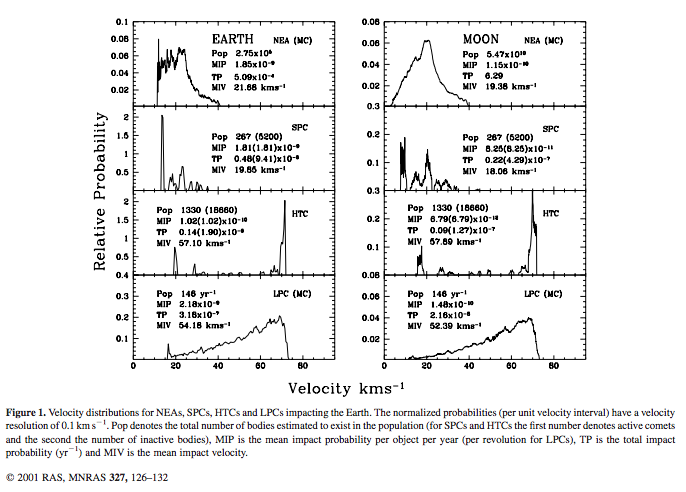 |
|
Near Earth asteroids (NEA) approach the Earth at a characteristic speed of ~ 20 km/s.
Retrograde comets can approach the Earth as fast as 75 km/s.
NEA: near Earth asteroids SPC: short period comets HTC: Halley-type comets LPC: long period comets
"Near-Earth object velocity distributions and consequences for the Chicxulub impactor"
S. V. Jeffers, S. P. Manley, M. E. Bailey, D. J. Asher, Mon. Not. R. Astron. Soc. 327, 126–132 (2001)
Nuisance value of asteroids
Energy
(Joules)
Uranium bomb, 10 kTon TNT 4
Hydrogen bomb, 10 MTon TNT 4
100 meter asteroid 2 20 km/s, 2 g/cm^3
Apophis asteroid, 270 meters 2
Tambora Volcano, 1815 3.3 Largest eruption since Lake Taupo, 180 CE
Magnitude 9.5 earthquake 1.1 Valdivia, Chile, 1960. Largest earthquake in the last century
1 km asteroid 2 20 km/s, 2 g/cm^3
10 km asteroid 2 20 km/s, 2 g/cm^3. Size of "dinosaur extinction" asteroid
http://en.wikipedia.org/wiki/Mount_Tambora
http://en.wikipedia.org/wiki/99942_Apophis
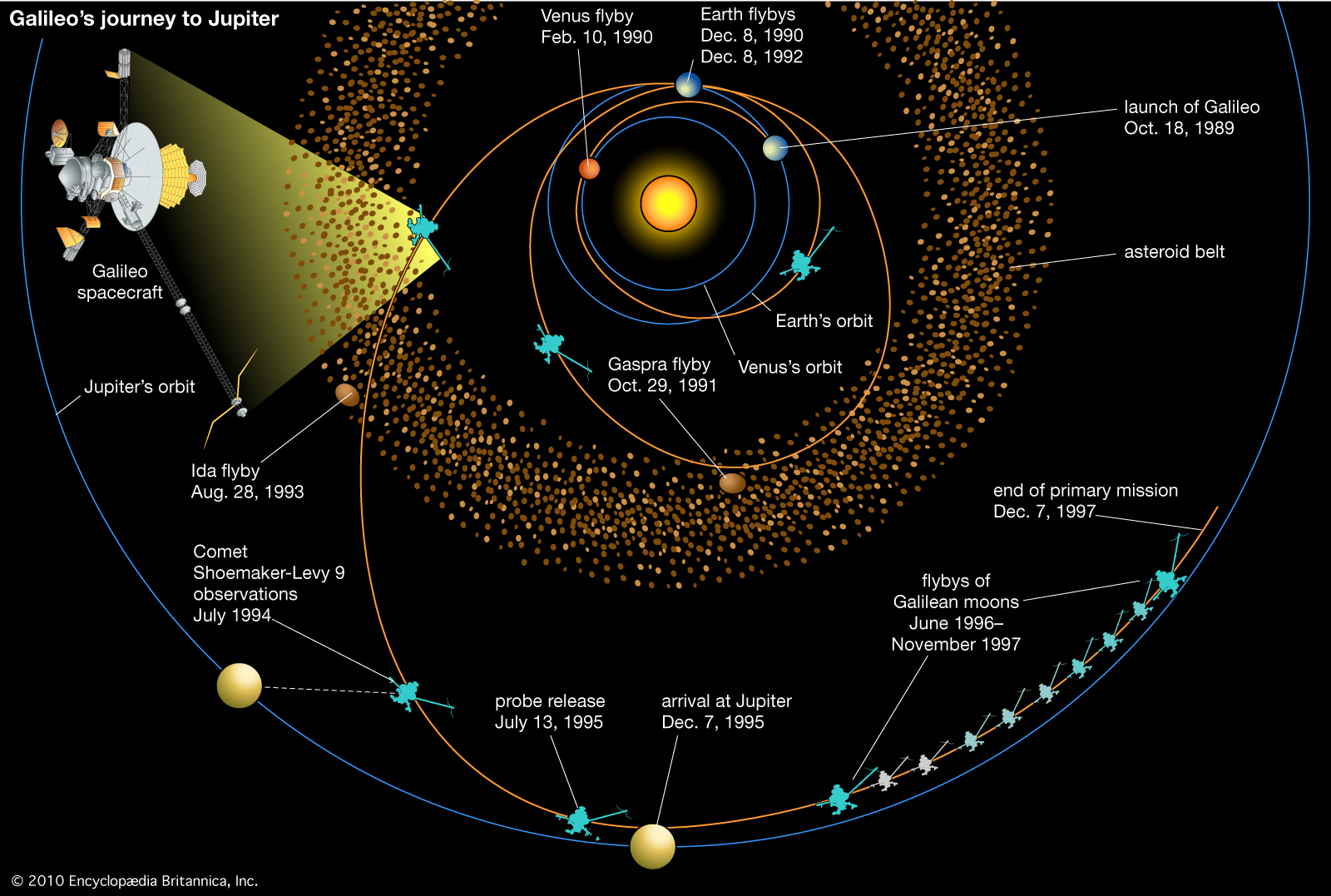 |
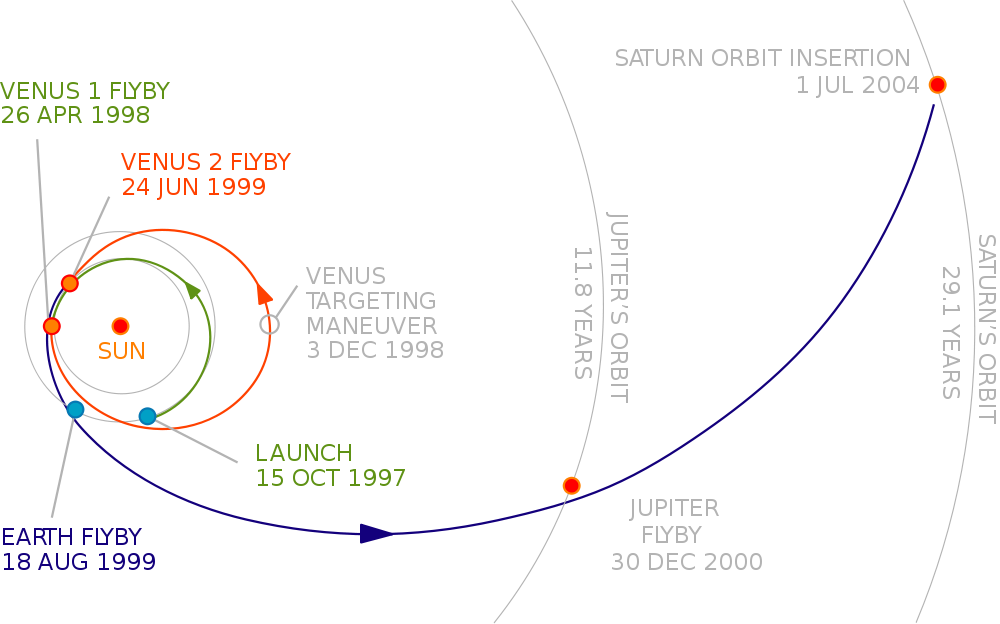 |
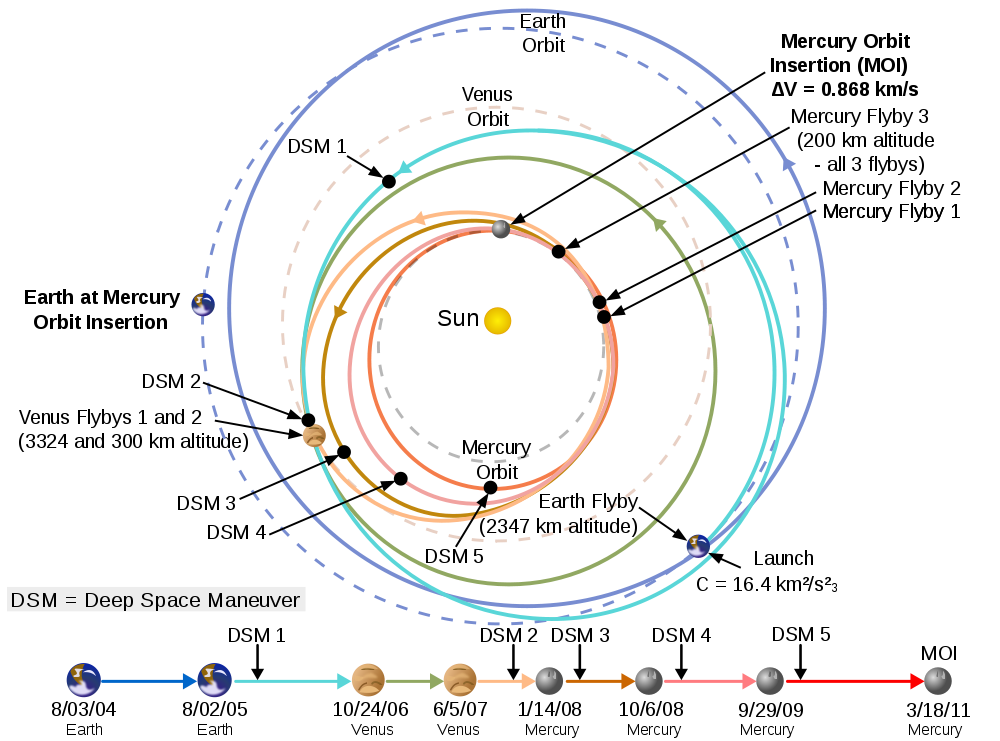 |
| Galileo (Jupiter) |
Cassini (Saturn) |
Messenger (Mercury) |
 |
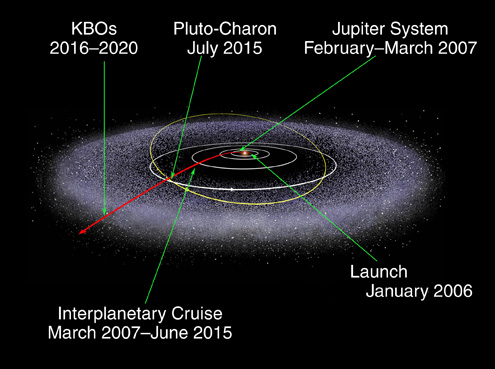 |
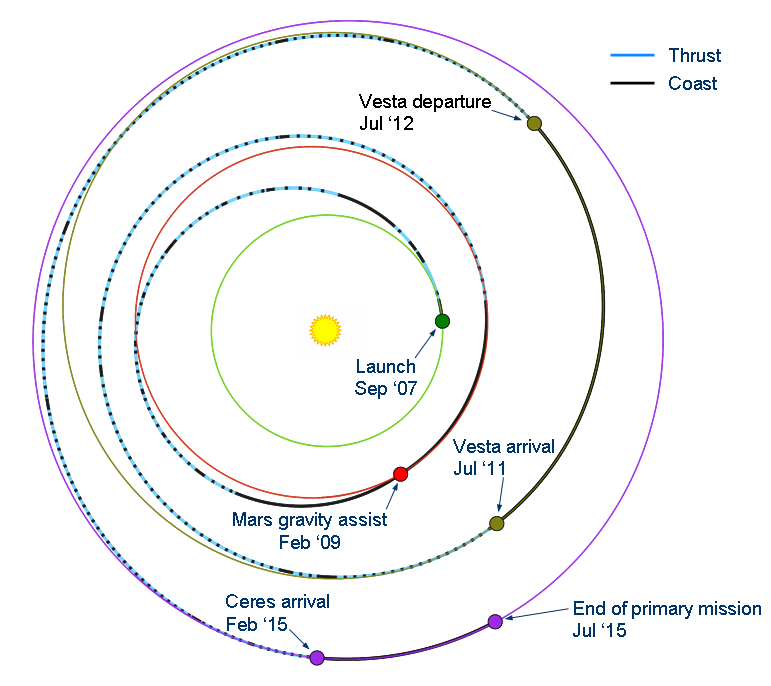 |
| Voyager 1 & 2 |
New Horizons (Pluto) |
Dawn (Vesta & Ceres) |
Each of these missions is powered by chemical rockets except for Dawn, which is powered by
an ion drive. Ion drives require fewer gravitational assists than chemical rockets.
Propulsion
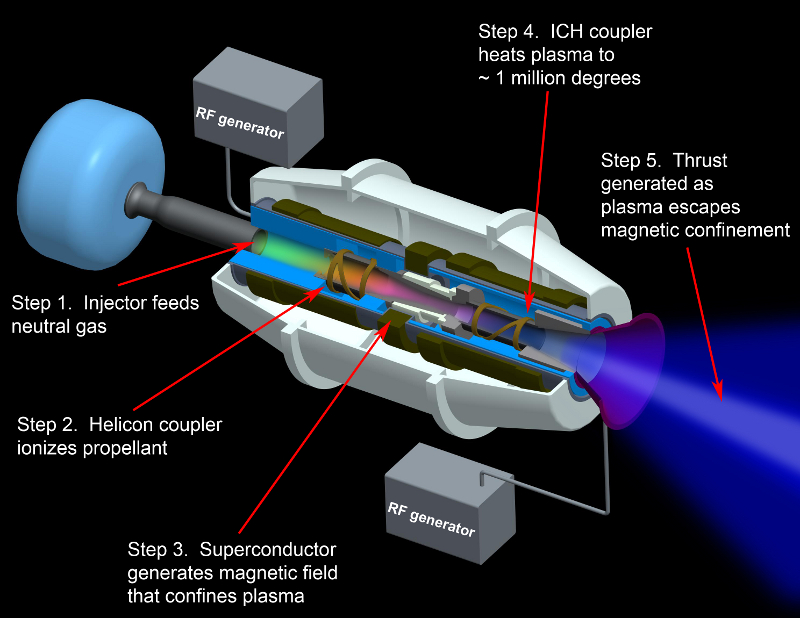 |
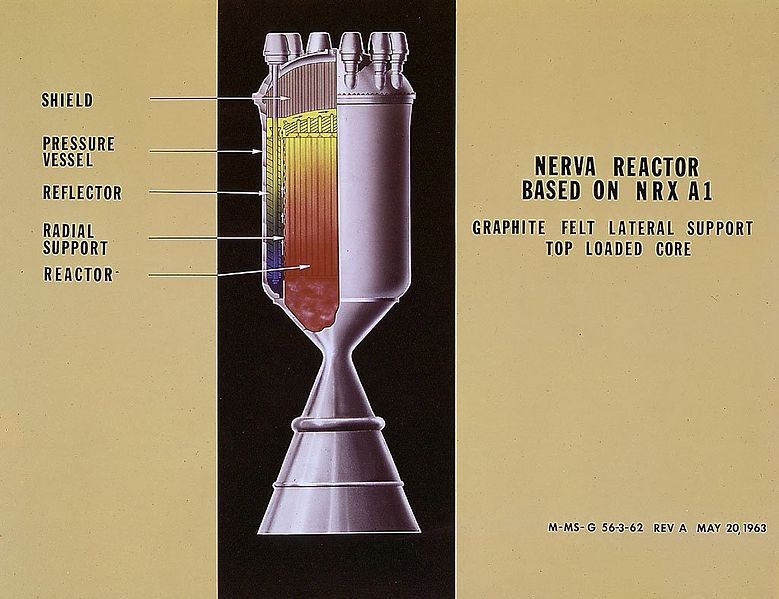 |
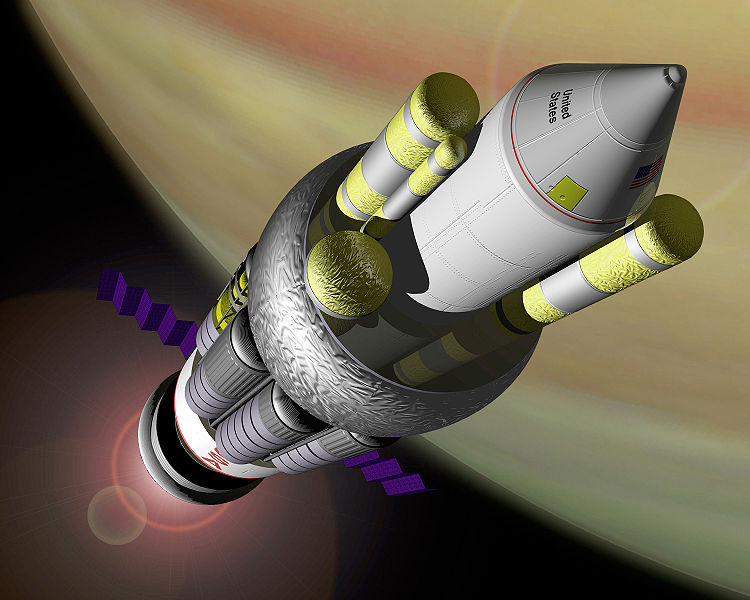 |
| VASIMR ion drive |
Nuclear thermal rocket |
Orion fusion rocket |
Exhaust
(km/s)
Hydrogen+oxygen rocket 5
Dawn ion drive 31
VASIMR ion drive 50
Nuclear thermal rocket, H2 exhaust 9 NERVA design
Nuclear thermal rocket, H2O exhaust 1.9 NERVA design
Solar thermal rocket, H2 exhaust 9
Solar thermal rocket, H2O exhaust 1.9
Orion fusion rocket 10000
Antimatter rocket ~ 1/2 c
All of these rockets are possible with current technology except for the antimatter rocket.
Ion drives cannot move heavy objects because of their low thrust.
If a thermal rocket can operate at a temperature high enough to dissociate H2 into elemental hydrogen,
larger exhaust speeds are possible.
The performance of a solar thermal rocket depends on its proximity to the sun.
Nuclear thermal rockets work everywhere.
http://en.wikipedia.org/wiki/Nuclear_thermal_rocket
http://en.wikipedia.org/wiki/Solar_thermal_rocket
Energy for propulsion
Hydrogen + Oxygen 1.4 Joules/ton
Uranium-235 8.0 Joules/ton
Solar energy 1.4 Joules. 1 km^2 collector operating for 10^6 seconds at 1 A.U.
The solar energy collected by a 1km mirror at 1 A.U. over a time of 10^6 seconds (2 weeks) is
Energy ~ 1400 Watts/m^2 * 10^6 m^3 * 10^6 seconds ~ 1.4
Nuclear power and solar power can move large objects. Chemical energy cannot.
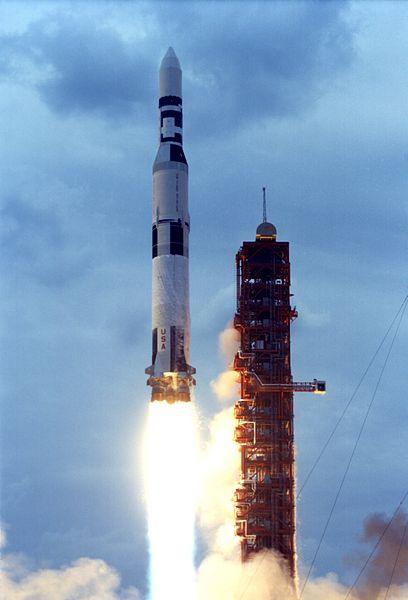 |
| Saturn V rocket |
The Saturn V rocket, the largest ever built, can launch ~ 120 tons of uranium into low Earth orbit.
How long would it take an alien spaceship to reach the Earth?
Distance to Alpha Centauri, the nearest star 4.3 light years
Milky Way diameter 0.1 million light years
Distance to Andromeda 2.5 million light years
Distance to the Virgo Supercluster 54 million light years
Light travel time during age of universe 13750 million light years
Age of the universe ~ 13.75 billion years
Age of the Earth ~ 4.54 billion years
An alien civilization in the Virgo Supercluster with a 1 billion year head start on us
has plenty of time to get here.
http://en.wikipedia.org/wiki/Age_of_the_universe
http://en.wikipedia.org/wiki/Age_of_the_Earth
Getting around the solar system
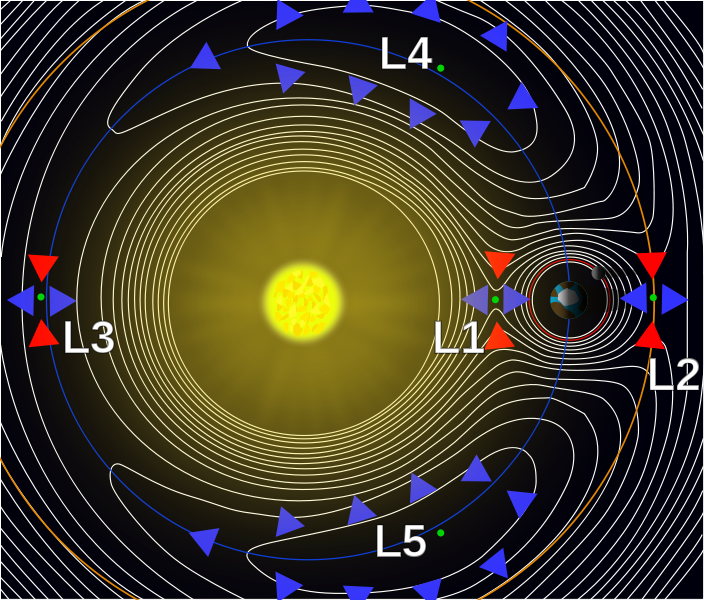 |
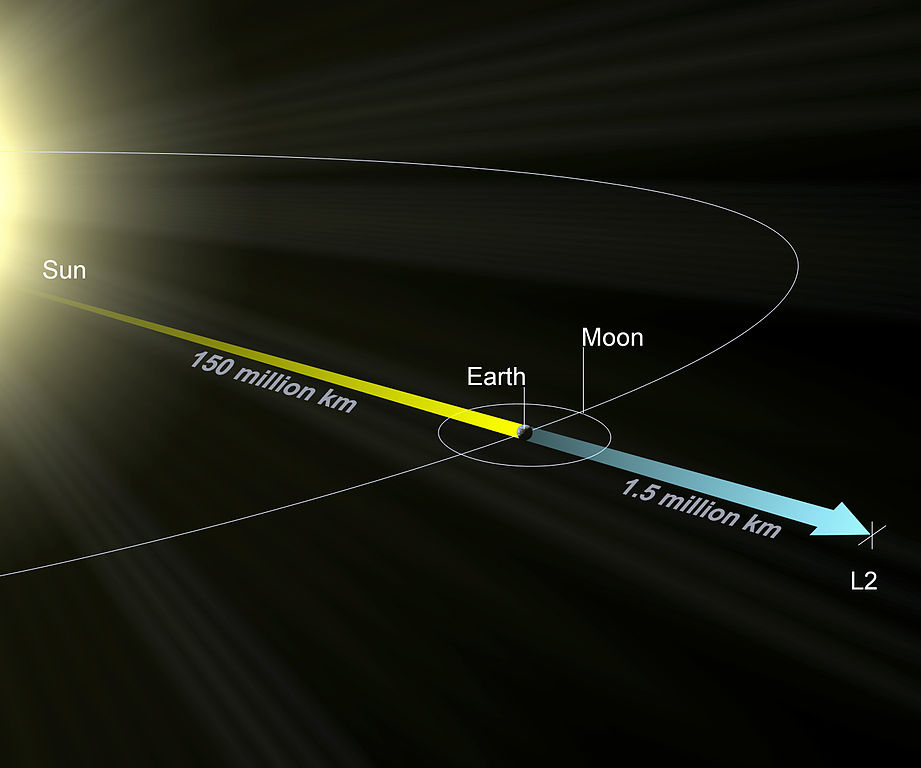 |
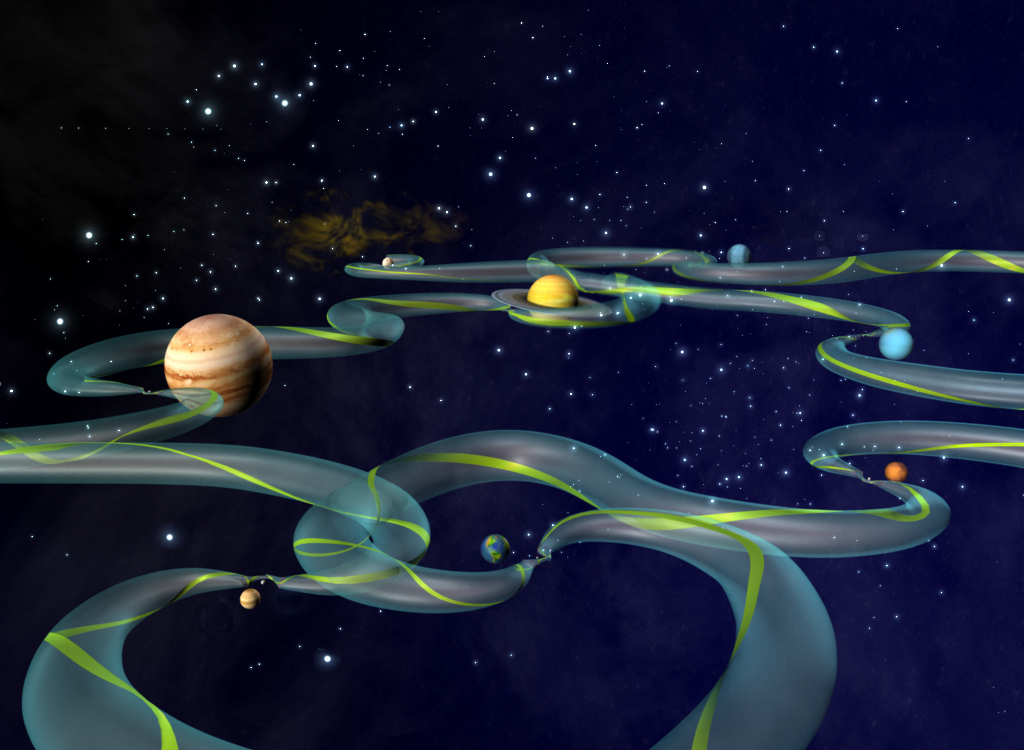 |
| Lagrange points |
Earth Lagrange points |
Interplanetary transport network |
Deflection strategy
Suppose a spacecraft is launched from the Earth to collide with an asteroid, and suppose
that the asteroid is struck from the edge to give it a sideways momentum.
V = asteroid velocity toward Earth v = velocity of spacecraft toward asteroid
M = mass of asteroid m = mass of spacecraft
X = initial distance of asteroid x = distance from Earth of collision
S = sideways momentum gained by the asteroid
D = amount of deflection when the asteroid reaches the Earth
E = (1/2) m v^2 = energy used to propel the mass toward the asteroid
If the spacecraft is slower than the asteroid,
v << V
The distance from the Earth to the collision point x is
x v
--- ~ ---
X V
The sideways momentum gained by the asteroid is
S ~ m V
The amount the asteroid is deflected when it reaches the Earth is
D S m
--- ~ ---- ~ ---
x MV M
The speed of the deflector (v) in terms of the propulsion energy (E) is
E ~ m v^2
The deflection (D) in terms of the propulsion energy (E) is
v m
D ~ --- --- X ~ m^(1/2) E^(1/2) X / (M V) [Equation 1]
V M
For fixed propulsion energy, the deflection scales as m^(1/2). The larger the
deflector mass the better. Given the difficulty of lauching material from the
Earth into space, this favors a strategy of finding material from space.
Iceberg
Ice can serve as a deflector.
Ice can serve as the exhaust for a thermal rocket.
The asteroid Ceres has abundant ice.
A thermal rocket can easily lift material from Ceres into space.
The Dawn spacecraft will arrive at Ceres in February 2015.
Mass H2O H2O density Radius Escape
(kg) (kg) frac (g/cm^3) (km) speed (km/s)
Earth 5.97e24 1.4e21 .00025 5.52 6378 11.2
Ceres 9.43e20 2.0e20 .21 2.08 487 .51
.jpg) |
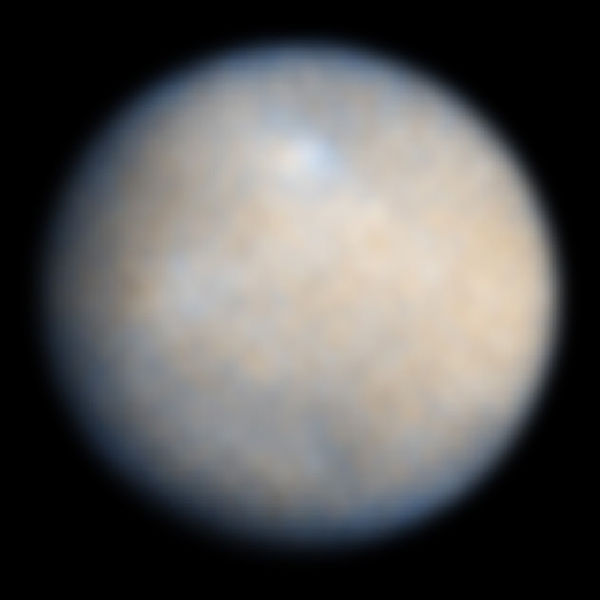 |
| 21 Lutetia (metallic asteroid) |
Ceres (icy) |
How much of the iceberg should be used for propulsion exhaust?
m_iceberg = Initial mass of iceberg
m_e = Mass of iceberg used as exhaust
m_f = Final mass of iceberg after operating the rocket
E = Energy available for propulsion
v_e = Exhaust velocity
v_f = Final velocity of iceberg after operating the rocket
m_iceberg = m_e + m_f
Case 1: Use only a small fraction of the iceberg for propulsion.
m_e << m_f
Conservation of momentum:
m_e v_e ~ m_f v_f
v_e >> v_f
m_e v_e^2 >> m_f v_f^2
The kinetic energy of the exhaust is much larger than the kinetic energy of the final iceberg.
E ~ m_e v_e^2
The final speed of the iceberg is
m_e
v_f ~ v_e ----- ~ E^(1/2) m_e^(1/2) / m_f
m_f
The larger the exhaust mass, the better.
Case 2: Use most of the iceberg for propulsion.
m_e >> m_f
The Tsoilkovsky rocket equation is
Rocket speed ~ Exhaust speed * ln(Initial mass of rocket / Final mass of rocket)
v_f ~ v_e * ln(m_i / m_f)
The deflection imparted to the asteroid scales as (from Equation 1 above)
Deflection ~ m_f v_f ~ m_f v_e * ln(m_i / m_f)
Using more of the iceberg for exhaust gives you a larger final velocity but there is a
point of diminishing returns reflected in the logarithm.
For maximum deflection, the exhaust mass and the final mass should have the same magnitude.
m_e ~ m_f
The exact choice for (m_f/m_i) depends on particulars about the iceberg's orbit
around the Earth. The more icebergs you have in orbit, the better.
How fast will the iceberg move?
Suppose you have have an iceberg handy in Earth orbit. Use 1/2 of the iceberg
as rocket exhaust and the other half to impact the incoming asteroid.
From the rocket equation,
v_f ~ v_e * ln(m_i / m_f)
If
m_i ~ m_f
v_e ~ 2 km/s
then the deflector will move at ~ 1.3 km/s.
Energy ~ Mass * Speed^2
With an propulsion energy of 10^16 Joules, you can move an iceberg of mass ~ 10^8 kg.
How much is the asteroid deflected?
m = Iceberg mass
v = Iceberg velocity
D = Amount the asteroid is deflected when it reaches Earth
E = Energy for iceberg propulsion
X = Distance of asteroid when the iceberg is launched
From above, the iceberg velocity is
v ~ 1.3 km/s
D ~ m^(1/2) E^(1/2) X M^(-1) V^(-1) [Equation 1]
X E 20 km/s 10^12 kg 2 km/s
D ~ 0.4 * (Radius of Earth) * ------------ * ------------ * -------- * -------- * --------
10^10 meters 10^16 Joules V M v
A solar thermal rocket can deflect a 1 km asteroid if discovered at a
distance of ~ 1/10 A.U.
How much does an asteroid impact heat the atmosphere?
Heat capacity of air ~ 1.0 Joules/kg/Kelvin
Mass of atmosphere ~ 5.1 kg
Let F = the fraction of the asteroid's kinetic energy that goes into heating the
atmosphere. The atmospheric heating is
Mass of asteroid Speed of asteroid
Heating ~ 40 kelvin * F * ---------------- * ( ----------------- )^2
10^15 kg 20 km/s
A 10 km asteroid has a mass of ~ 10^15 kg. If the asteroid is less massive than this
then you don't have to worry about cooking the atmosphere. The dinosaur-extinction
asteroid was ~ 10 km in size.
Minimum iceberg mass
To do justice to the propulsion energy, the iceberg needs a minimum
mass of
Propulsion energy (Max useful velocity)^2
Mass ~ 5*10^9 kg ------------------- -------------------------
10^16 Joules (2 km/s)^2
A 200 meter iceberg can deflect a 1 km asteroid.
Fetching the iceberg
Escape speed
Jupiter 59.5
Earth 10.2
Mars 5.03
Moon 2.38
Ceres .51
Vesta .36
Pallas .32
Hygiea .21
Gravity assists can change a trajectory by of order the escape speed.
You can use a sequence of gravity assists like a billiards-style trick
shot to move objects around the solar system, requiring only
nudges between assists. This is the "interplanetary transport network".
The energy required to fetch an iceberg is
Mass of iceberg (Change in velocity)^2
Energy ~ 5*10^16 Joules ----------------- ------------------------
10^10 kg (1 km/s)^2
A 1 km solar thermal rocket can move a 200 meter iceberg from the asteroid belt
to the Earth.
Mirror mass
Surface area Thickness Density
Mirror mass ~ 8*10^5 kg -------------- ----------- ----------
1 km^2 10^-4 m 8 g/cm^3
A solar thermal rocket capable of delivering ~ 10^16 Watts can be built
from a ~ 10 meter metallic asteroid.
Global sunscreen
The Earth's temperature is given by a balance between solar heating and blackbody
radiation.
I = Intensity of solar radiation
T = Earth temperature
dI 4 dT
I ~ T^4 --> ---- ~ ------
I T
Changing the Earth's temperature by 1 Kelvin requires dI/I ~ .013,
corresponding to a sunscreen with area ~ .013 * 1.27e14 ~ 1.7e12 meters,
or (1300 km)^2.
The mass of an orbital sunscreen is
Surface area Thickness Density
Mass ~ 1.4*10^12 kg -------------- ----------- ---------
(1300 km^2) 10^4 m 8 g/cm^3
An orbital sunscreen can be built from a ~ 1 km metallic asteroid.
The energy required to retrieve this asteroid from the asteroid belt is
~ 10^18 Joules, easily achievable by a solar thermal rocket.
Climate design
A above scaling is for a brute force sunscreen. With a gyroscope-equipped
fleet of orbital mirrors, finesse allows us to get by with a
smaller sunscreen. For example, sunlight that would have fallen on
equatorial mountains can be redirected to promote arctic agriculture, and
snow can be encouraged at the poles. It may even be possible to tame
hurricanes and turn them into tourist attractions. This presents an
opportunity for global cooperation.
Energy
An orbital mirror can power a steam engine and the power can be beamed with
microwaves to the Earth.
The power used by civilization is ~ 2e13 Watts. A square mirror 100 km on a side
collects ~ 1.4e13 Watts of sunlight.
Earth without CO2
If the Earth is an ideal blackbody,
Solar heating ~ Blackbody radiation ~ Stefan_Boltzmann_constant * Area * Temperature^4
1361 Watts/m^2 * pi * Earth_radius^2 ~ 5.67e-8 W/m^2/K^4 * 4 pi * Earth_radius^2
* Temperature^4
--> Temperature ~ 278 Kelvin
The Earth's average temperature is 287 Kelvin (wolframalpha.com).
The sun's luminosity is increasing and in ~ 1 billion years the oceans will boil
off even if the Earth has zero CO2. In ~ 5 billion years the sun will become a
red giant and consume the Earth.
Artificial gravity
If artificial gravity is generated by spinning a spaceship, the spin period has
to be at least 30 seconds for the inhabitants to not get dizzy.
At 1 g this corresponds to a spin radius of ~ 250 meters.
http://en.wikipedia.org/wiki/Artificial_gravity
Cosmic rays
Annual radiation on the Earth ~ 1 millisieverts.
Annual radiation on the space station ~ 350 millisieverts.
Annual radiation on a space station with 4 tons/meter^2 of radiation shielding ~ 2.5 millisieverts.
Earth atmospheric thickness ~ 10 tons/meter^2
Mars atmospheric thickness ~ .2 tons/meter^2
To shield astronauts from cosmic rays you need ~ 10^4 tons of material.
This is too much to launch into space from the Earth.
Ice from space can be used for radiation shielding.
Jeet Kune Do: "Way of the intercepting fist"




















.jpg)

